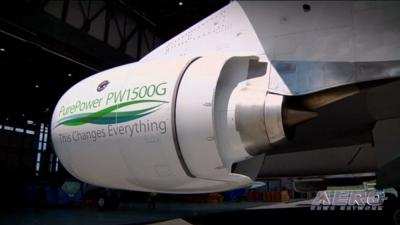Sat, Jan 07, 2023
AD 2022-27-04 Prompted By An Uncommanded Dual Engine Shutdown Upon Landing
The FAA is adopting a new airworthiness directive (AD) for all Pratt & Whitney (PW) PW1519G, PW1521G, PW1521G-3, PW1521GA, PW1524G, PW1524G-3, PW1525G, and PW1525G-3 model turbofan engines.

This AD was prompted by an uncommanded dual engine shutdown upon landing, resulting in compromised braking capability due to the loss of engine power and hydraulic systems. This AD requires removal from service of certain electronic engine control (EEC) full authority digital engine control (FADEC) software versions and replacement with updated software. The FAA is issuing this AD to address the unsafe condition on these products. This AD is effective January 31, 2023.

Supplementary Information: The FAA issued a notice of proposed rulemaking (NPRM) to amend 14 CFR part 39 by adding an AD that would apply to all PW PW1519G, PW1521G, PW1521G-3, PW1521GA, PW1524G, PW1524G-3, PW1525G, and PW1525G-3 model turbofan engines. The NPRM published in the Federal Register on October 25, 2022 (87 FR 64397). The NPRM was prompted by a report that an airplane experienced an uncommanded dual engine shutdown upon landing, resulting in compromised braking capability due to the loss of engine power and hydraulic systems. A subsequent investigation determined that the sequence of the auto-throttle increasing throttle to maintain Mach number, immediately followed by pilot command to decrease throttle to idle, caused a transient disagreement between actual and commanded thrust. This disagreement triggered the thrust control malfunction (TCM) detection logic and resulted in dual engine shutdown once the weight on wheels signal was activated upon landing. The installed EEC FADEC software
version latches the fault and allows the engine to continue operation as commanded but shuts down the engine upon landing. The manufacturer identified the situations that could trigger the TCM logic erroneously and updated the EEC FADEC software. This software update makes corrective improvements to the TCM logic, including revised criteria for triggering the TCM logic and establishing criteria that permit the TCM logic to unlatch during flight. In the NPRM, the FAA proposed to require removal from service of certain EEC FADEC software versions and replacement with a software version eligible for installation. The FAA is issuing this AD to address the unsafe condition on these products.
More News
With Testing Soon Complete, Launch Preparations Begin in Earnest Sierra Space's Dream Chaser has been put through the wringer at NASA's Glenn Armstrong Test Facility in Ohio, but w>[...]
Takeoff Roll The process whereby an aircraft is aligned with the runway centerline and the aircraft is moving with the intent to take off. For helicopters, this pertains to the act>[...]
“We’re proud of the hard work that went into receiving this validation, and it will be a welcome relief to our customers in the European Union. We couldn’t be mor>[...]
"Aircraft Spruce is pleased to announce the acquisition of the parts distribution operations of Wag-Aero. Wag-Aero was founded in the 1960’s by Dick and Bobbie Wagner in the >[...]
IDENT Feature The special feature in the Air Traffic Control Radar Beacon System (ATCRBS) equipment. It is used to immediately distinguish one displayed beacon target from other be>[...]
 Sierra Space Repositions Dream Chaser for First Mission
Sierra Space Repositions Dream Chaser for First Mission ANN's Daily Aero-Term (05.10.24): Takeoff Roll
ANN's Daily Aero-Term (05.10.24): Takeoff Roll Aero-News: Quote of the Day (05.10.24)
Aero-News: Quote of the Day (05.10.24) Aero-News: Quote of the Day (05.11.24)
Aero-News: Quote of the Day (05.11.24) ANN's Daily Aero-Term (05.11.24): IDENT Feature
ANN's Daily Aero-Term (05.11.24): IDENT Feature



